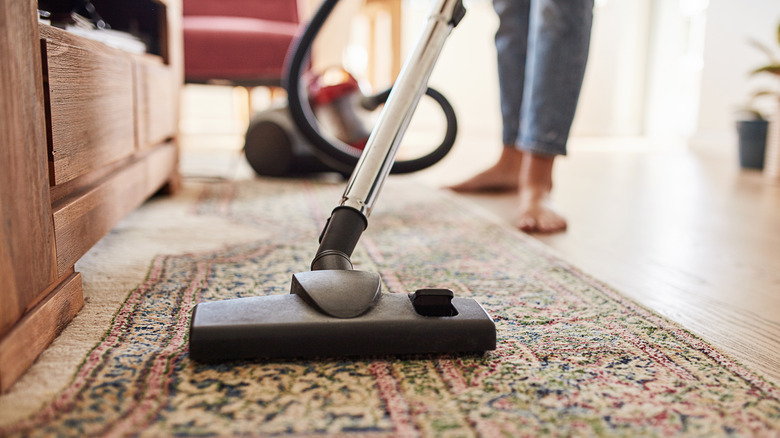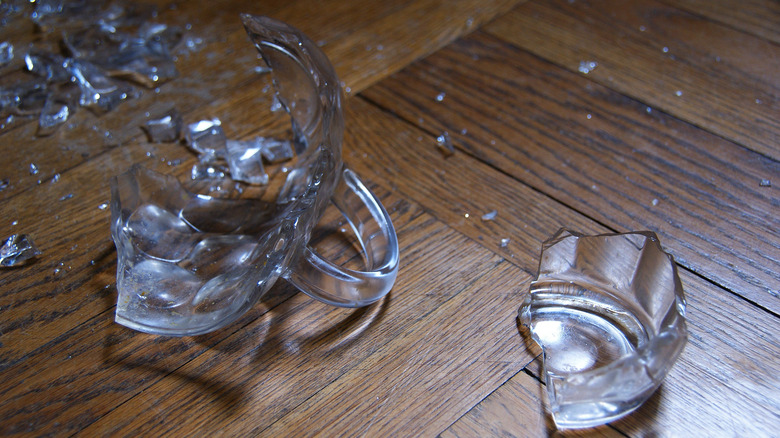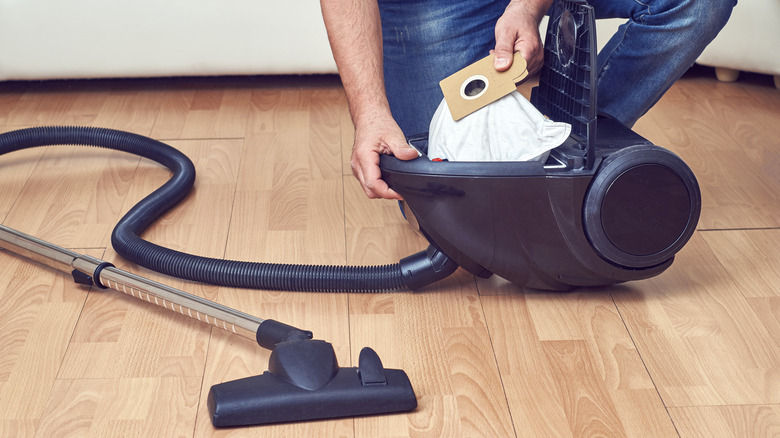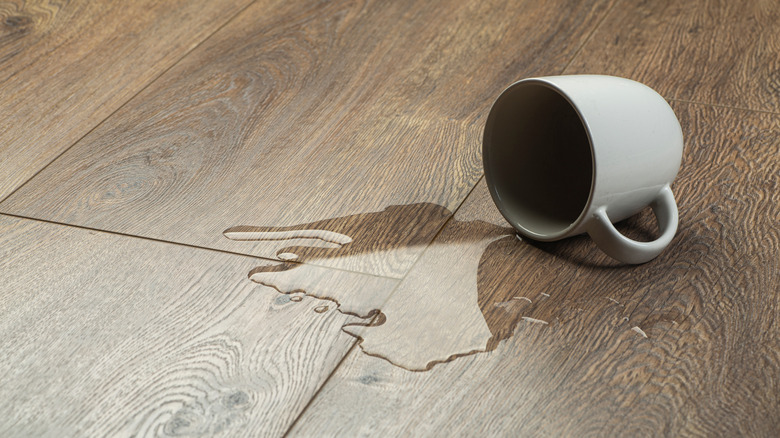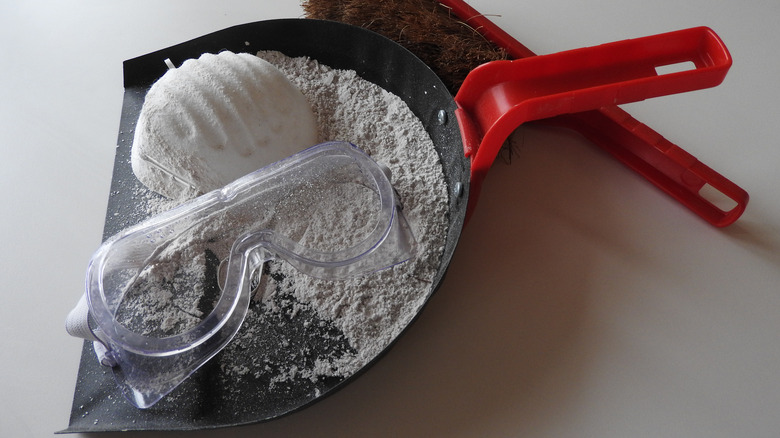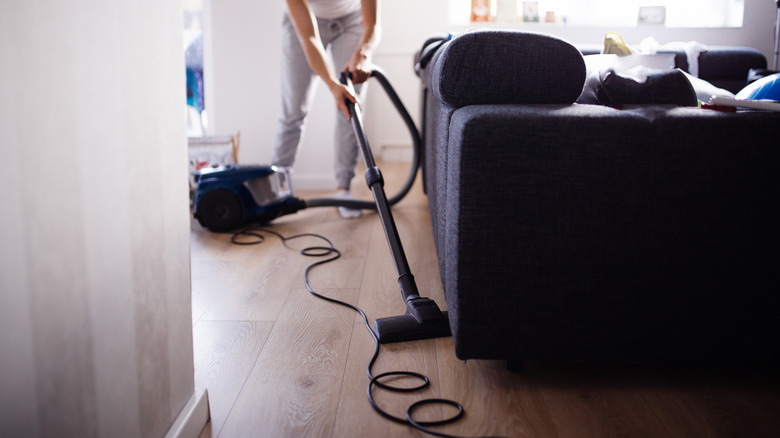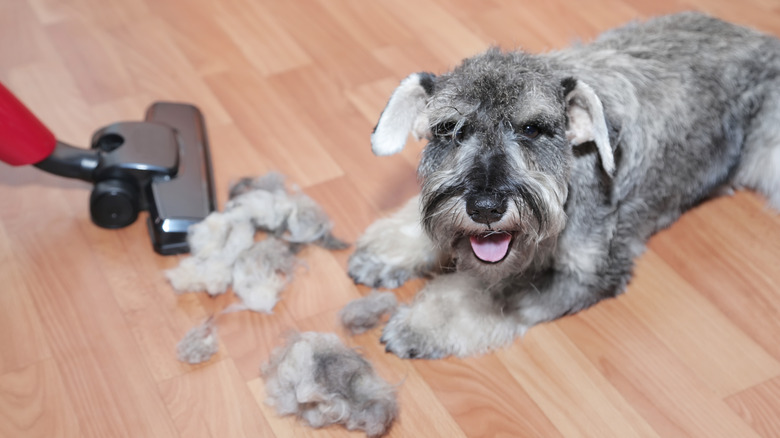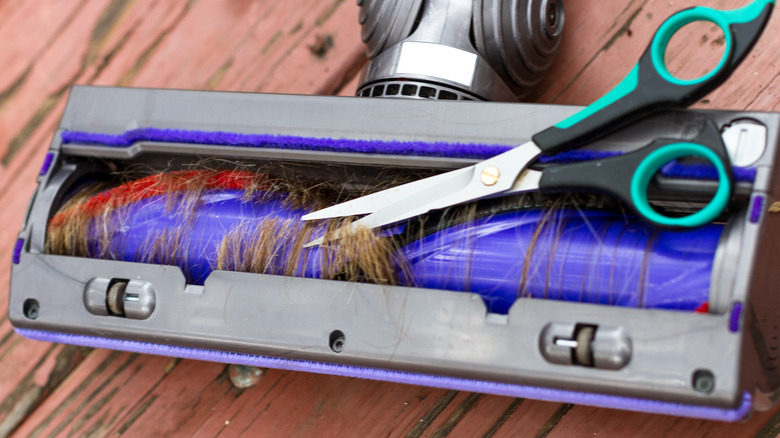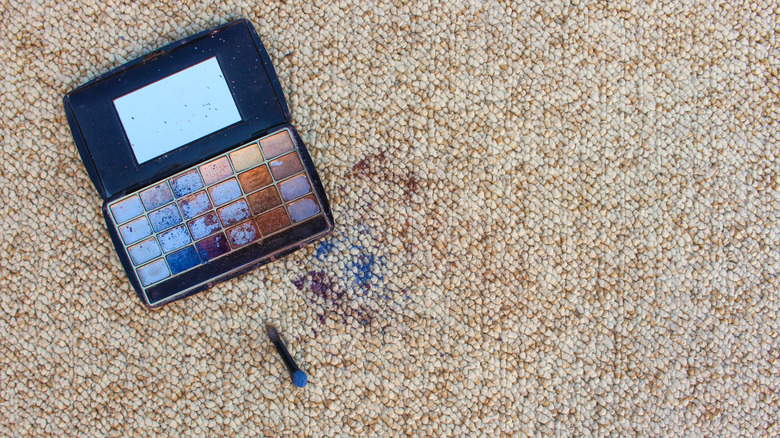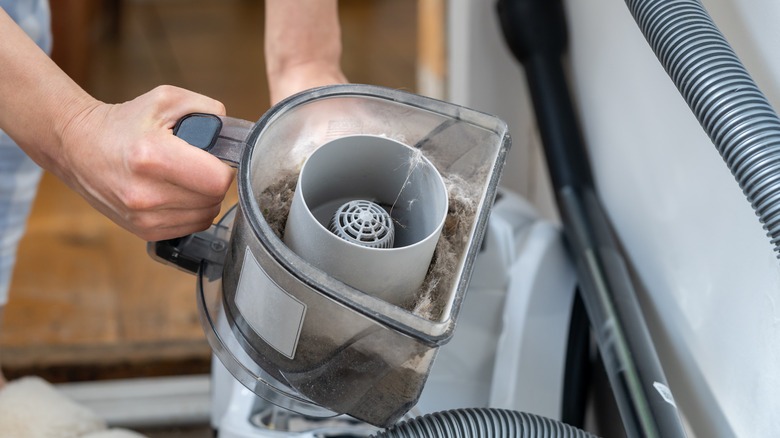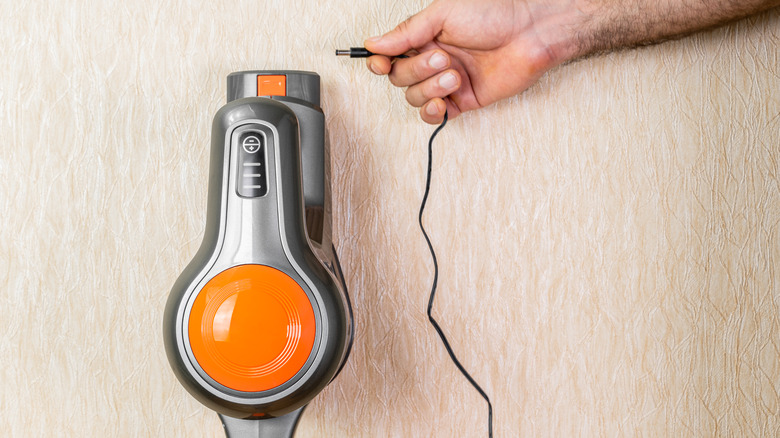10 Common Mistakes You're Making That Are Slowly Killing Your Vacuum Cleaner
Trusted to clean up dust, crumbs, pet hair, and more, vacuums handle a lot of dirty jobs. Considering how often we use them and their (sometimes high) upfront cost, it's worthwhile to take good care of this household helper. While regular maintenance is important, taking care of your vacuum really starts with avoiding some vacuuming blunders.
Whether it's forgetting to clean the filter or occasionally sucking up a coin, most of us have some bad vacuuming habits we should break — especially when you find out that these actions can damage your vacuum cleaner and possibly even shorten its lifespan. Vacuums last a median of eight years. Of course, in actual-world conditions, lifespan can vary from a couple of years to over a decade. The more careful you are with your vacuum, the longer it's likely to last, and if you keep up with maintenance, the better it will perform as well. Keep your vacuum in good shape by avoiding these common vacuuming mistakes.
Vacuuming up hard or sharp objects
Almost all of us have vacuumed up something we know we probably shouldn't. Coins, paper clips, screws, hair pins, kid's toys, and other small, hard items are just so much easier to let the vacuum handle. But these pieces that click and clack up the hose can be doing damage. Though unassuming, they can harm the inside of the machine by scratching the interior, breaking the rotator brush, or getting lodged into small spaces.
The fallout can be even worse if you suck up sharp objects. If you're cleaning up broken glass or come across a needle or thumbtack, you're much better off using a dustpan and broom. Even more of a scratch risk, sharp bits can also tear or puncture bags and release contents into the vacuum, which spells trouble for the motor. Plus, pointy bits and shards of glass can be a danger when it comes time to empty the vacuum. If you use your hand to empty a dust bin or grab a punctured bag, it's easy to accidentally cut yourself.
Letting the bag or dustbin get too full
A too-full vacuum doesn't work well. As you suck up more dirt, it has nowhere to go, especially in a high-quality vacuum that's completely sealed. When the vacuum simply can't take anymore, the dirt will either find a way to escape by releasing dust back into the air, or become compressed in the vacuum and possibly cause clogs. Continuing to vacuum will also affect performance since air can't move efficiently through the machine when it's full. This will make the motor work harder, which can mean a shorter lifespan.
Some bags and almost all bins have a max fill line that indicates when you should change or empty the machine. Other bagged vacuums have a full bag indicator. If the bag doesn't have either, change it when it's around half full, which will make sure the vacuum maintains its powerful suction. For bagless vacuums, it's best to empty the bin after each use to prevent it from getting overfilled, though letting it fill to the max line won't cause any damage.
Sucking up wet or sticky messes
Household vacuum cleaners are not designed to clean up wet messes. In fact, using them on liquids can even be dangerous. It can spell a vacuum failure if it gets into the electronic parts. At worst, there's even a risk for electrocution. Because of this, skip vacuuming liquid spills, wet carpets, damp plant debris, used coffee grounds, or other spilled food. Sticky messes are a similar problem, but their tacky texture makes them even more of a hassle. They can stick to the interior workings of the machine and can make a big mess of the brush roll. Moist waste (especially food) can also rot and grow mold inside your vacuum, which is a mess and smell you don't want to deal with.
Use your vacuum to handle dry and non-sticky messes exclusively. Paper towels, microfiber cloths, or rags are much better for cleaning up anything with moisture. If you really need to vacuum liquids, buy a wet/dry shop vacuum that can safely handle these types of jobs.
Vacuuming very fine particles
When you have a pile of dusty debris, it may feel like second nature to grab a vacuum to clean it up. However, very fine particles can cause serious damage to a household vacuum. While vacuuming small amounts is fine, you don't want to suck up a big pile of fine dust. This includes construction debris like sawdust and drywall dust, fireplace ashes, and large amounts of baking soda and other fine powders. Very fine dust can also bypass some vacuum filters. This can release the powder back into the air, which defeats the purpose of cleaning and can even pose a health hazard if you breathe it in. If any of the particles bypass the bag or interior filters, they can get into the vacuum motor, causing it to strain or even burn out.
If you want to use a vacuum, use a suitable shop vacuum for cleaning fine particles. Otherwise, a broom and dustpan are the right tools for most jobs. It doesn't hurt to throw on a dust mask, too, if you're dealing with a big cleaning job.
Not being careful with the vacuum cord
Running over the cord with the vacuum can cause damage, especially when the brush roll is on. At best, picking the jammed cable out of a tangled brush roll is no fun task. At worst, the force of the vacuum can break the protective outside of a cord, rendering it unsafe to use.
When vacuuming, you're best off plugging the vacuum into an outlet in the room that you're in. It lets you keep better track of the cord and prevent it from getting damaged by winding around furniture or getting pulled too taut. Also, make sure always to unplug the vacuum at the socket. Sure, it's easier to just yank at the vacuum cord to unplug it, but that's really bad for the vacuum. Doing so can bend the plug prongs, and sometimes, they can be so bent you won't be able to plug your vacuum in again. Once you're done cleaning, secure the cord so it won't get damaged in storage.
Sucking up large amounts of hair
A vacuum shouldn't be your clean-up tool of choice after a DIY haircut or trimming your pet — there's a reason why most salons use a broom and dustpan to clean up. A vacuum is perfectly fine for catching stray hairs that you come across in your daily or weekly cleaning. However, big piles of hair can damage your machine.
The first spot where it can cause trouble is at the brush roll, where it can easily wrap around. This can damage the piece itself or strain the motor. If your vacuum doesn't have a brush roll, that doesn't mean you'll get off scot-free. Clumps of hair can clog other parts of the vacuum, such as the hose and filters. If any of the hair bypasses the filters, it can also get into the motor, causing it to strain or become blocked.
Not cleaning the brush roll often
Is your vacuum having trouble picking up debris off a rug or carpet? If you haven't cleaned the brush roll in a while, it might be the culprit. A brush roll that's full of hair, string, and other fibers won't work effectively, and can even cause damage if left for too long. If the strands build up, they can cause the roll to deform, pressing down the bristles and bending them. Even worse, if debris builds up on the sides, it might stop it from spinning, causing stress on the motor and causing a burning smell from the continued attempts to keep rolling. If you've ever smelled burning rubber from a vacuum, one place to check is the brush roll.
If you live with anyone who has long hair, you've probably seen how tightly strands can wind around a brush. It can feel almost impossible to take off! If scissors aren't quite doing the job, reach for a seam ripper instead. Designed to get under tight stitches, a seam ripper can shimmy under those tightly wound hairs. Its cutting edge will slice right through, making it much easier to pull them out.
Vacuuming anything that can melt inside the machine
Vacuums have a whole lot of power, which means they can get quite warm when they run. Anything that melts easily shouldn't be sucked up — it runs the chance of melting inside the machine. At best, it can cause a mess inside the unit, spreading over interior parts. At worst, if any melted liquid makes its way to the motor, it can fry your vacuum.
Makeup is the most common culprit. For example, pieces of lipstick, lip balm, or eyeshadow can soften and melt with a bit of heat. Many of these products are also pigmented, so they can dirty the inside of your vacuum. Not to mention, if you're trying to clean up these products from the carpet, the process can make an even bigger mess. The brush roll can push makeup even further into the rug fibers, and what it does suck up can smear across the roll's bristles, eventually spreading it to other parts of the rug. Instead, clean the area with a damp microfiber cloth and soap.
Skipping regular cleaning and maintenance
It can feel ironic to clean the appliances that help us do our cleaning, but with vacuum cleaners, it's a very important chore. Filters should be cleaned or changed according to the manufacturer's recommended timeline, and the machine should be deep cleaned around once a year. Accessories and brushes should be checked over and cleaned after each use (pulling the hair out of them or giving them a quick wipe-down is usually enough). Occasionally, check the hose for any blockages, and if you find any, remove them before using the vacuum. It's better to remove a clog from the hose rather than have it cause trouble inside the vacuum. I
Many newer vacuums come with washable filters (which means less additional costs and waste). Follow the manufacturer's directions for washing, and adhere to the recommended drying time to make sure the filter is completely dry before going back into the machine. A clean filter is important: A dirty or clogged one impedes airflow, which will affect your vacuum's suction power and can make the motor work overtime. Filters also prevent dirt from escaping the machine or entering the motor, so it's important to keep them in good shape. To prevent dust from escaping, ripped or torn filters should definitely be replaced.
Bad charging habits
Cordless vacuums are so convenient, but they can sometimes fail us when it comes to their battery life. According to data collected by Consumer Reports, almost half of cordless stick vacuums will develop an issue within five years. Most often, it will be a problem with the battery, such as a diminished battery life or even a dead battery. There are steps you can take to take care of it, though, and it starts with how you charge it.
Most modern cordless vacuums have lithium-ion batteries. To help them run longer, it's best to avoid full discharges, which means to avoid running the battery until it's empty. It's also best not to leave it constantly on the charger; lots of time spent at 100% charged can stress it. Try to do short, shallow charges instead. The sweet spot is to keep the battery between 20% and 80%. Just a note: Letting your vacuum battery run down or keeping it on its charging station isn't a safety problem. They're designed to sit on their chargers. However, it might diminish battery life faster, forcing you to replace your vacuum sooner.
